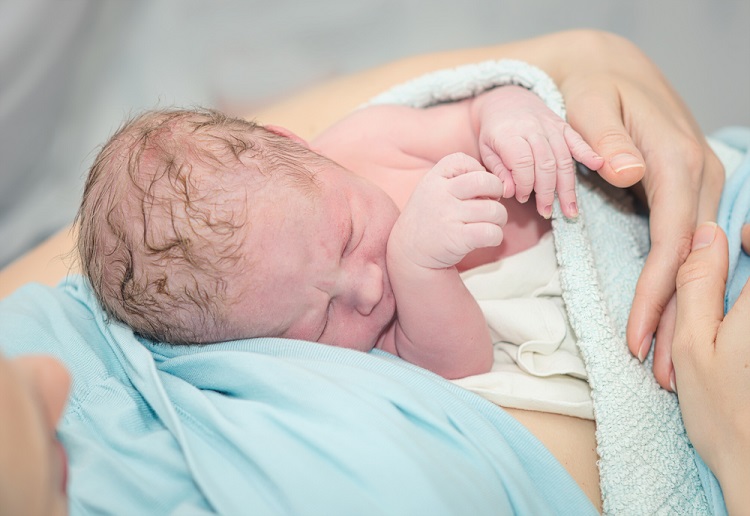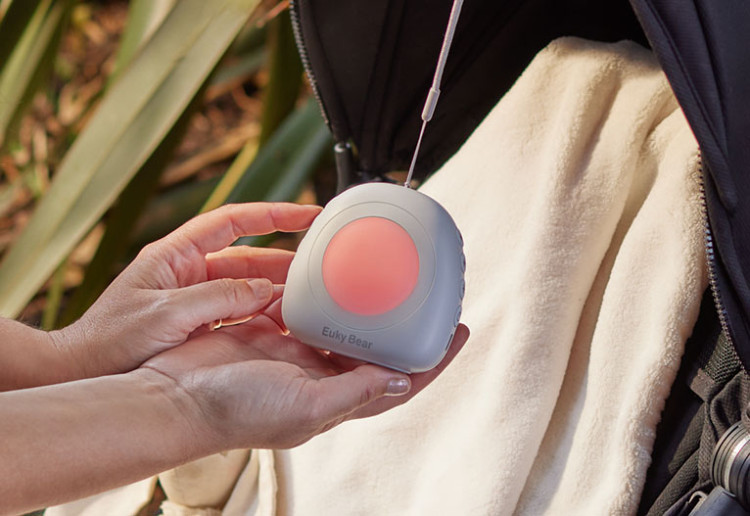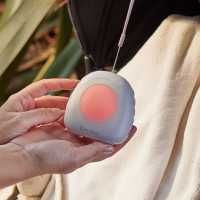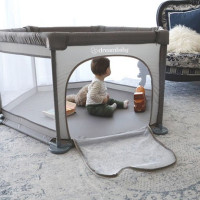STUDY finds it’s time for women to stop pushing during childbirth and just breathe…
The staff at Medway Maritime Hospital in the UK initiated a project to stop telling women to push. The Royal College of Obstetricians and Gynaecologists (RCOG) and the Royal College of Midwives put out a call for action after seeing a sharp rise in severe perineal tearing affecting nearly 14,000 women in 2013 to 2014.
Over a 12-month period after the program was implemented, the incidence of women with severe tearing went down from 7% to 1%. How have they gotten such amazing results? Largely, simply by not asking women to push when they are in labour.
Guidelines also discourage women from staying on their backs in labour — they are encouraged to try alternate positions. Women are also encouraged to slow down during labour, and nurses coach them to breathe through contractions instead of pushing.
The program has been so successful, the results were published in the European Journal Of Obstetrics & Gynaecology And Reproductive Biology.
The results of this study is no surprise to many midwives and obstetrical care providers, however it is great news for women everywhere that these methods are finally getting formal recognition as the better, safer way for women to labour.
What the experts say
We spoke to Dr Sarah Broderick, an Obstetrician, Gynaecologist and Fertility specialist in Canberra.
Dr Sarah told MoM, “that there has certainly been a totally unacceptable increase in perineal trauma over the last few years and something must be done.”
She said, “the data from England certainly looks promising and I agree that active pushing at the wrong stage of labour is detrimental. The uterus is an amazing organ that is designed to contact and send the baby through the birth canal under its own efforts without a maternal contribution. However, if there is an emergency situation like excessive bleeding or fetal distress, sometimes the maternal voluntary effort can speed up the delivery. This is in exceptional circumstances of course.”
Relax Rather Than Push
Dr Sarah added, “I would definitely advocate for most women who are low risk and progressing well with good contractions to be told to relax rather than actively push. They should be encouraged to trust their bodies, as they are designed to do this. We as doctors and midwives should be the ones on the look out for signs of a problem and then act accordingly. We should also support the perineum with hot packs and gentle pressure to control the head.”
Bel Moore, founder of Fourth Trimester Parenting, IBCLC, Midwife, Child and Family Health Nurse, Nurse Immuniser and Babywearing consultant also told MoM that directed pushing in labour is still an unfortunate common practice that many labouring women experience in hospitals today due to both the practice being performed and handed down to new staff by some of the older generations of health professionals and staff having to do so as the normal physiological process of birth has been altered or stalled by the birth environment, medical interference and pharmacological pain relief resulting in the need to direct the pushing.
Breathe Your Baby Out
Both health professionals and pregnant women are becoming more informed and educated in evidenced-based practices such as allowing women to push when they get the urge and to push how they wish, which has reduced the tendency and culture to coach women to “PUSH”. The implementation of the STOMP project in the Medway Maritime Hospital encouraged women, I believe, to experience the fetal ejection reflex and be able to breathe their baby out instead of actively pushing.
The “fetal ejection reflex”, a term first coined by French Obstetrician, Michael O’Dont, is the process of the primitive brain facilitating the normal process of labour and birth by releasing extremely high level of adrenaline during late labour and stimulating the Ferguson reflex ( pressure in the pelvis caused by baby) to let the baby descend through the birth canal without active maternal pushing.
This reflex is often unable to be activated in hospital births (98% of all Australian births in 2014) due to the negative impacts a hospital birthing environment (bright lights, loud noises, unfamiliar people, excessive interruptions and supine positions) has on the neocortex.
Bel believes to reduce the rates of severe vaginal and anal tearing in Australia, implementation of more home like birthing environments and practices need to be introduced to allow low risk women to experience a relatively undisturbed normal birth.
Zoe a certified Midwife from BornOnline told MoM she would assume most public hospital birthing units and birthing centres around Australia would be practicing this way, especially if they are following evidence based practice.
Zoe explains she has been a midwife for just over 12 years and was educated to not do ‘push coaching’ back at that time, She says the research to support letting women follow their own body when it comes to pushing out her baby is very strong.
When You Should Push
Zoe says, “I would say the only time you would encourage a woman to push would be if she was to have an epidural. When a woman has a epidural she is unable to feel where to push her baby out and is unable to feel contractions. At this time a midwife would need to work with the woman during her second stage. This would mean the midwife telling her when to push.”
Another reason a midwife or obstetrician may tell a woman to push would be in an obstetric emergency when time is a factor. Again on a very rare occasion.
One MoM member told us that panting baby out is the message many mums are receiving in online birthing groups.
“Panting baby out, reducing tearing and letting your body birth the baby (is the message today, compared to having your) midwife or Dr saying push push push…”
Did you push or pant during childbirth?
Share your comments below.
Shutterstock photo
We may get commissions for purchases made using links in this post. Learn more.




















9:31 pm
10:36 pm
7:44 pm
10:15 pm
8:32 pm
1:50 am
9:20 am
3:36 am
8:08 pm
-

-
-
-
mom93821 replied
- 14 May 2018 , 6:29 am
Reply12:48 pm
4:05 am
7:50 pm
12:47 am
9:42 pm
2:18 pm
- 1
- 2
- 3
- »
Post a comment